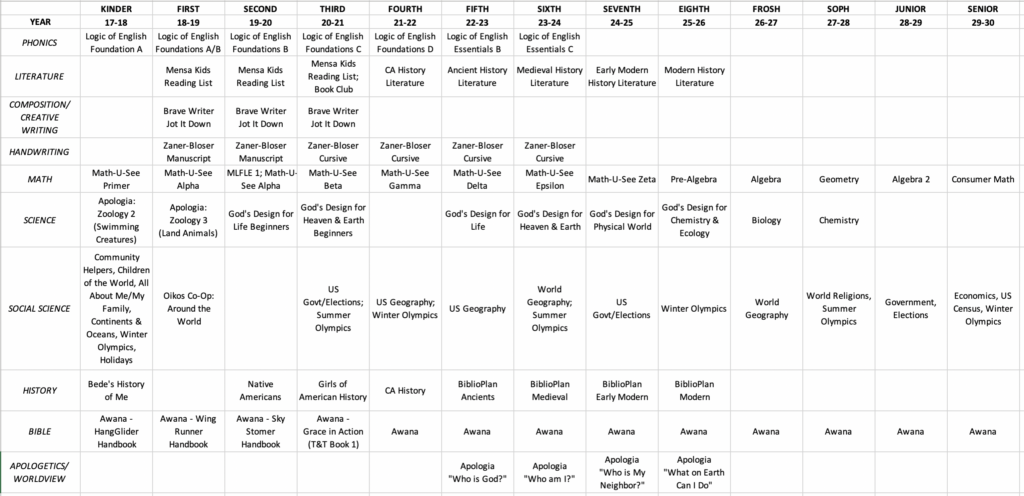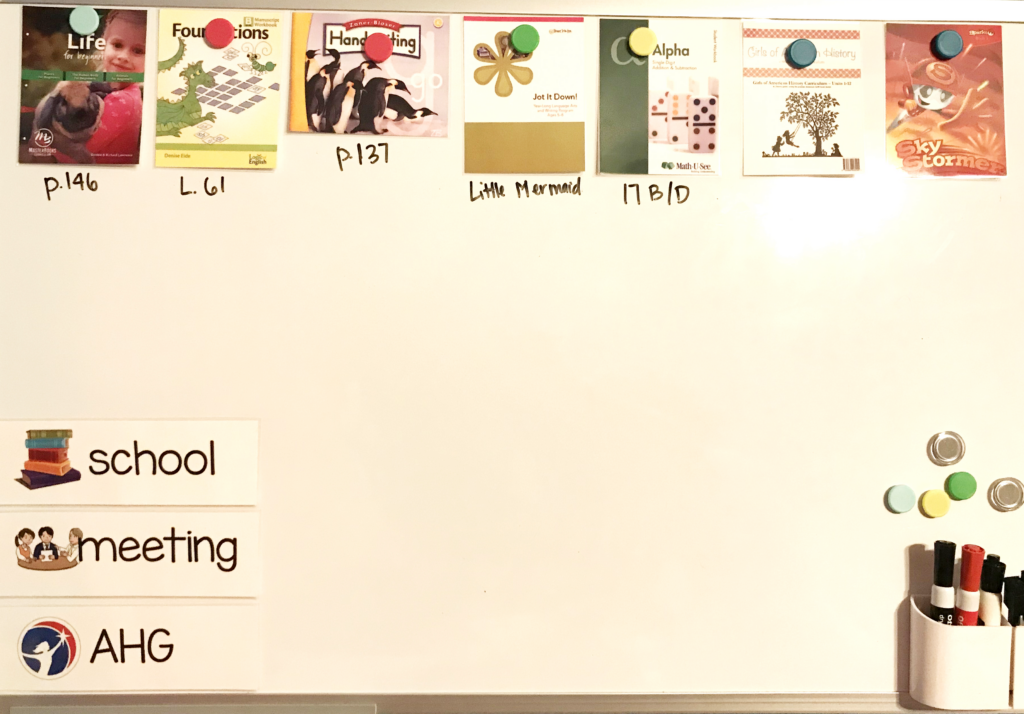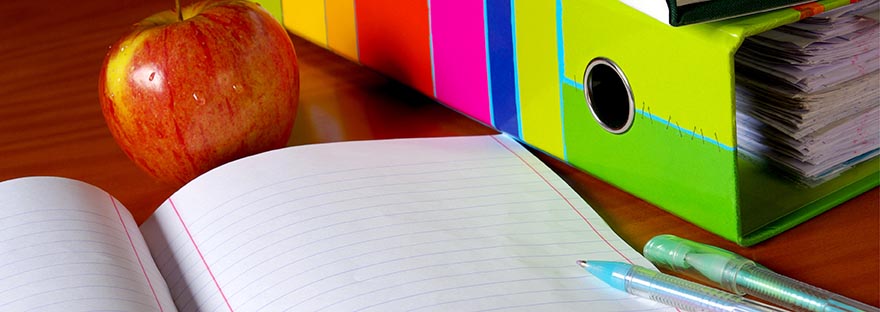by Katie Julius
You’ve picked out all of your curriculum and you’re excited to get started. But as you thumb through the pages of the clean, crisp pages, a sense of uncertainty overwhelms you. “I love this curriculum, but how do I know what to do each day?” Some curriculum comes with a schedule that’s been planned out for you. But even with those that do, they may not align with your planned schedule of 4 days a week (instead of 3 or 5). And what happens when you miss a day…or two…or go on a field trip?
Let’s take a look at some ideas to help you plan your homeschool year.
START BIG
I know this may sound kind of crazy, especially if you’ve already selected and purchased your curriculum for this year, but I recommend starting with an overall educational plan. Since we started homeschooling when my daughter was in kindergarten, mine is a 13-year plan. Yours may only be eight years, or maybe just two or three. However many years you have left until your student graduates, that’s how long it should be.
I used a simple spreadsheet to make this plan. I listed each grade level across the top and each subject down the side. Then, I began filling in the spaces. If I knew the exact curriculum and/or resources I knew I wanted to use, I filled those in. If not, I just put in basic subjects (i.e. Biology, Geometry, Medieval History). I also include current events that may influence what we cover in a given year — things like an election or the Olympics that offer opportunities for a unit study or enrichment of the regular curriculum.

Now, I know you may be thinking that you have no idea what your five-year-old is going to be studying 12 years from now, but just trust me. This will help you ensure that you are covering all the topics and subjects that you want to cover with your student. It also helps you keep on track with the vision and mission you have for your family’s educational journey. It’s a little easier to not get sidetracked by what everyone else is doing. That said, this isn’t written in stone. You can change it. If you find you don’t like a curriculum you had planned for the next 10 years, change it. If your child is no longer interested in becoming a marine biologist and wants to be a music teacher, scrap the high school biology class in your plan and add in some music. The idea is to get your thoughts down on paper to create a roadmap.
YEARLY & MONTHLY PLANNING
When it comes time to begin planning for the next school year (sometimes I get the itch in March or April and sometimes I don’t get to it until July or August), I refer back to my overall plan and begin to purchase curriculum and look at extra fun things I can add to our school (aka field trips!).
Field trips usually align best with science or historical topics, but especially in California, you can usually find a field trip related to pretty much anything within a couple of hours of driving. This coming year, we are studying California History and geology. I begin by making a list of all the possible field trips we could do (if you’re doing California History, there’s a lot. Way more than you could ever do in just one year) and then looking at the curriculum to see where they fit in best. I then put them into a monthly schedule and fill up the year so I can get a quick glance of the topics within each subject that we are doing each month. This isn’t usually exact, but it gives me an idea so I don’t end up planning a trip to the Poppy Preserve in the fall when it’s just dry and brown or visiting Death Valley in the middle of the summer. We try to do several field trips each month since they’re fun, but if your family only does one, narrow down your list and choose your favorites to visit for the year.
WEEKLY PLANNING
Once I get a rough idea of what we are doing each month, I usually work about a month at a time to be more detailed with exactly which chapters and lessons I aim to complete each week. This helps me if I need to reserve any books from the library (it usually takes 1-2 weeks for them to arrive, depending on where they’re coming from), or reservations for a field trip, or supplies for a project.
DAILY PLANS
I don’t do daily plans for the entire year at once. I’ve learned over the last few years that it’s futile. As organized as I want to be, I have learned that we are more relaxed homeschoolers and a full year of daily plans would quickly become obsolete. I usually make a rough plan for our daily lessons one week at a time. Then, each evening after my daughter is in bed, I pull out everything we need for the next day and update our whiteboard with what she needs to complete.

Since we file our own PSA, I don’t have to turn in any lesson plans to anyone, so we just use a visual image of the front of the book that has a magnet on the back, and then I write which page(s) or lesson she is to do that day. As we complete it, she takes it off the whiteboard. If I did have to fill out daily lesson plans, I would write it in at the end of the day what we completed. I would go through way too many erasers if I did it in advance!
JUST DO THE NEXT THING
I know you’re thinking, “Okay, I’ve got all my plans done but what happens if we fall off the rails and get behind on my plans and we just can’t catch up?” You can rest assured that even the most disciplined and put together homeschooling parents have gotten behind or didn’t get to everything they planned. If you were in a traditional classroom setting, how many times can you remember actually completing the entire textbook? Yeah, me neither!
My advice? Just do the next thing. Wherever you left off, pick up from there. You may have to review a little bit, depending on how long it’s been, but then keep moving forward one day, one page, one lesson at a time. And it’s okay to slow down if you feel like your child needs the extra time. Just keep plugging along at their speed. It’s one of the wonderful things about private home education – you don’t have any arbitrary standards that you have to meet.
If you’re looking for some sample forms to use for your home school, be sure to check out CHEA’s Downloadable Forms. If you want to hear more about Lesson Planning, we invite you to become a CHEA member and listen to our New to Homeschool Digital Content Pass, which includes the recording of our Planning Your Year webinar (you can find it on the Digital Library tab when logged into your CHEA account).

